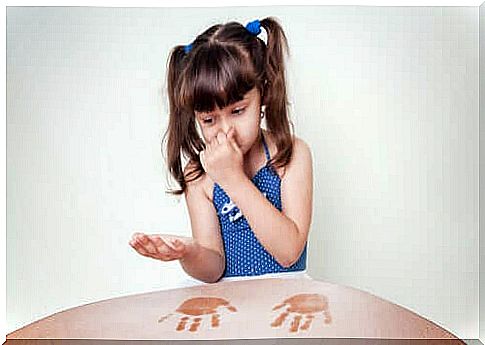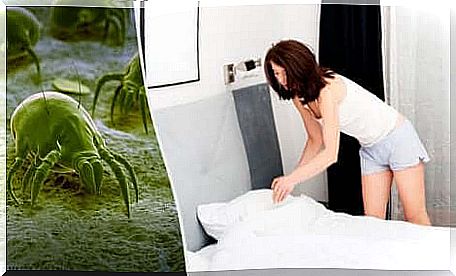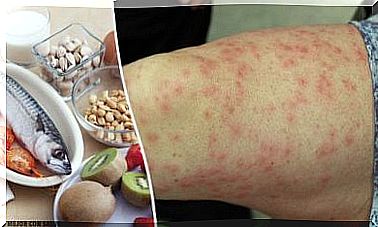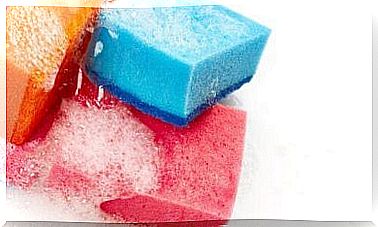How To Live With A Dust Allergy
Living with a dust allergy is not easy. Changes in daily habits are necessary to adapt the environment. In this article, we will explain what this pathology consists of and what are the best measures to deal with it.

In fact, when we talk about dust allergy, we are specifically referring to the allergy to dust mites that live in this environment. It is not an allergy to dust per se, but to those tiny insects that live between its particles.
For those who suffer from it, living with this condition on a daily basis is difficult. To overcome it, some changes in everything that seems logical and usual need to be put in place. If you want to have a better quality of life, here we will detail some steps you can take to live with this condition. Take note !
What are dust mites?
The dust mite is a small organism that can only be seen through a microscope. It has a great capacity to develop in different environments, although certain conditions are very favorable to it.
We know that these beings need relatively high humidity to survive and a moderate temperature. This is why they are more frequent in tropical areas with a coast and are less present in the mountains.
The best seasons for them are the transitional seasons, like fall and spring. It is for this reason that people with allergies to dust may see this condition worsen at these two times of the year. However, we often tend to attribute this fact to a supposed increase in dust in the environment.
Forms of presentation of dust allergy
Those who suffer from this pathology, in addition to learning to live with dust allergy, must learn to identify and treat the symptoms that arise from it. This allergy can acquire three clinical forms:
- Conjunctivitis. This is the inflammation of the ocular conjunctiva. Symptoms are tearing, itchy eyes, and swelling of the eyelids. Vision deteriorates due to the inflammation and the eye turns red.
- Rhinitis. It is the inflammation of the lining of the nose. When there is rhinitis, there is a previous runny nose (rhinorrhea), itchy nose and sneezing. There is usually a clear, transparent discharge through the nasal cavity. This condition can also obstruct the upper airway by temporarily complicating breathing.
- Asthma. The most serious form of dust allergy is the development of allergic asthma. The bronchi close as a reaction to the external agent, and the patient suffers from dyspnea, that is, lack of air. Bronchial wheezing accompanies asthma as a characteristic sound of breathing.

Steps to take to live with a dust allergy
Living with a dust allergy involves making changes in the environment. When the affected person is a child, parents will need to make the necessary adjustments to make the environment less allergic. The general measures to apply to live with this condition are:
- Do not spread dust while cleaning. The best way to do this is to clean the furniture with damp rags.
- Dustproof bed linen. There are pillowcases and mattress covers with special anti-dust materials, which prevent the dust from getting caught.
- Wash bed linen once a week. Washing should be done in hot water. In this way, it is easier to remove the mite.
- Lower humidity. A dehumidifier is a good option for people who suffer from a dust allergy. The goal is to lower the humidity of the environment to less than half.
- Aspirate. A part of the household routine must necessarily include a vacuum cleaner. If the device has a micro-filter or HEPA (high efficiency) filter, even better.
- Carpets prohibited. If the house where the allergic person lives has carpets, it is best to remove them. Carpets, due to their humidity and temperature, are the ideal place for the proliferation of dust mites.
- Washable soft toys for children. In allergic patients of pediatric age, toys can carry dust mites. The object that most allows the proliferation of these is the plush. Therefore, one should avoid lint that cannot wash off in hot water.

Medical treatments
In addition to the measures to be put in place in the environment to deal with the dust allergy, if you suffer from this disease, it is more likely that the specialist will prescribe certain medications. They are not drugs for continuous use, but they may well be for prolonged use.
According to a Mayo Clinic publication, among the medical treatments to improve the symptoms of dust allergy, we find:
- Antihistamines. Medicines like loratadine or diphenhydramine decrease the production of substances that produce the allergic reaction in the human body.
- Corticosteroids. Both orally, as a nasal spray or as asthma inhalers, they are a therapeutic option. Among them we find betamethasone, dexamethasone, prednisone and fluticasone.
- Decongestants. To manage the symptoms of rhinitis, the doctor may prescribe decongestants in combination with an antihistamine. They cannot be taken for a continuous period of time; nevertheless, they help to get out of the symptoms faster.
- Immunotherapy. Allergist physicians, in the event of a diagnosis of dust allergy, may suggest immunization therapy. This consists of the systematic application of vaccines with low doses of the substances of the mites. The vaccines are applied for a few years until the body desensitizes to what causes the allergy.
As you can see, there are several alternatives to reduce and prevent the symptoms of dust allergy. We know that it is very difficult to have a completely clean house, but if you follow these recommendations and make adjustments in your habits, you will succeed in having a better quality of life. So, don’t hesitate to try them out!









